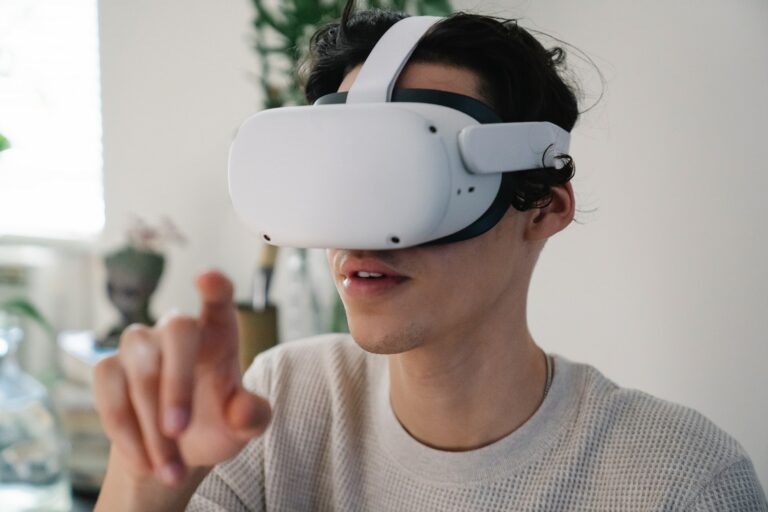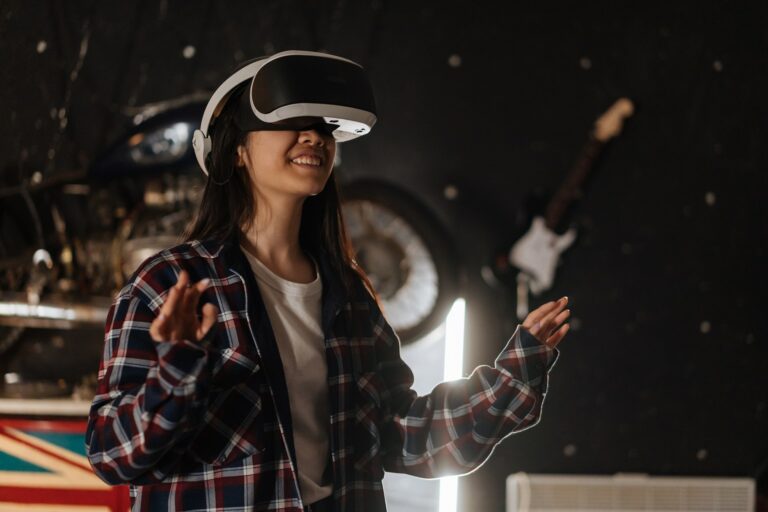Introduction
Welcome to a world where the boundaries of reality are pushed to new horizons. Virtual reality (VR) has become a game-changing technology, transforming our understanding and engagement with digital content. In this article, we will delve into the spectacular advancements in VR, exploring its immersive experiences, practical applications, and future potential. Get ready to step into tomorrow and uncover the wonders of virtual reality.
The Evolution of Virtual Reality
Over the years, VR technology has witnessed a remarkable evolution. From its humble beginnings as a niche concept, it has now become more accessible and widely adopted. Let’s take a closer look at the key milestones that have shaped the advancement of VR.
1. The Birth of Virtual Reality
The term “virtual reality” was coined by Jaron Lanier, a computer scientist, in the late 1980s. However, the idea of immersing oneself in a virtual world dates back even further. In the 1960s, Ivan Sutherland introduced the concept of “The Ultimate Display,” envisioning a computer-generated environment that could be experienced through a head-mounted display.
2. Early Attempts and Commercialization
In the 1990s, companies like Sega and Nintendo released VR gaming consoles, bringing virtual reality into the mainstream. However, the technology at that time was limited by low-resolution displays and cumbersome equipment, hindering its widespread adoption.
3. Modern Era Advancements
In recent years, significant advancements in VR technology have propelled it into new heights of realism and immersion. The development of high-resolution displays, powerful graphics processing units (GPUs), and sophisticated tracking systems have greatly enhanced the VR experience.
The Power of Immersive Experiences
VR offers an unparalleled level of immersion, transporting users to virtual realms that captivate their senses. Whether it’s exploring ancient civilizations, embarking on thrilling adventures, or collaborating with others in virtual environments, the possibilities are endless.
Virtual Reality Gaming: Where Fantasy Meets Reality
VR gaming has emerged as one of the most popular applications of this technology. With the ability to step into the shoes of your favorite characters, VR gaming delivers an unprecedented level of immersion. From heart-pounding action games to thought-provoking puzzles, VR gaming takes entertainment to a whole new level.
Educational Virtual Reality: Learning Beyond Boundaries
Education is another field where VR has made significant strides. By creating immersive and interactive learning environments, students can explore historical events, understand complex scientific concepts, and even visit places they could only dream of. VR-based education offers a dynamic and engaging learning experience that enhances retention and understanding.
Virtual Tourism: Travel Without Limits
Have you ever wished to visit the Pyramids of Giza or explore the Great Barrier Reef? With VR, you can travel to any corner of the world without leaving your living room. Virtual tourism allows users to experience famous landmarks, cultural heritage sites, and natural wonders, providing a glimpse into different cultures and destinations.
The Advancements That Shape the Future
As technology continues to advance, the future of VR holds tremendous potential for even more astonishing experiences. Let’s explore some of the cutting-edge advancements that are shaping the future of virtual reality.
1. Next-Generation Displays
One of the key areas of development in VR is the improvement of displays. Higher resolution screens with increased pixel density and wider field of view are on the horizon. These advancements will eliminate the screen-door effect and deliver a more realistic and immersive visual experience.
2. Enhanced Haptic Feedback
Haptic feedback, the sense of touch, plays a crucial role in creating a realistic virtual experience. Advancements in haptic technology aim to provide more precise and detailed tactile sensations, allowing users to feel the texture of virtual objects and even experience physical impacts within the virtual environment.
3. Artificial Intelligence Integration
Artificial intelligence (AI) is set to revolutionize VR by enhancing its capabilities in various aspects. AI algorithms can analyze user behavior and preferences, adapt virtual environments in real-time, and create dynamic and personalized experiences. This integration will lead to more intelligent and interactive VR applications.
Frequently Asked Questions (FAQs)
Q: What is virtual reality (VR)?
A: Virtual reality is a technology that creates a computer-generated environment that simulates a realistic experience. By using headsets or goggles, users can immerse themselves in a virtual world and interact with it through specialized controllers or sensors.
Virtual reality offers a wide range of applications, including gaming, education, training, healthcare, and virtual tourism. It has the potential to revolutionize various industries and enhance the way we experience digital content.
Q: What are the advantages of virtual reality?
A: Virtual reality provides numerous benefits, such as:
- Immersive experiences that transport users to virtual realms.
- Enhanced learning opportunities through interactive and engaging educational content.
- Improved training simulations for professionals in various fields.
- Virtual travel and exploration of distant places without leaving home.
- Opportunities for social interactions and collaboration in virtual environments.
Q: Are there any health concerns related to virtual reality?
A: While VR technology is generally safe, some users may experience discomfort or motion sickness, especially if they are prone to these conditions. It is recommended to take breaks and adjust VR settings to individual comfort levels. Additionally, prolonged use of VR headsets may cause eye strain, so it is advisable to follow usage guidelines provided by manufacturers.
Q: Can virtual reality be used for therapy or rehabilitation?
A: Yes, virtual reality has shown promising results in therapeutic and rehabilitation settings. It can be used to treat phobias, PTSD, anxiety disorders, and even provide pain management. VR-based therapies create controlled and immersive environments to help individuals overcome their challenges in a safe and supportive manner.
Q: What does the future hold for virtual reality?
A: The future of VR is incredibly exciting. As technology advances, we can expect more realistic visuals, enhanced haptic feedback, improved AI integration, and expanded applications in various industries. Virtual reality has the potential to reshape how we interact with digital content and create immersive experiences beyond our imagination.
Conclusion
Virtual reality continues to astound us with its remarkable advancements. From immersive gaming experiences to transformative applications in education, healthcare, and beyond, VR has the power to transport us into virtual realms like never before. As technology evolves, the future holds even more incredible possibilities for this groundbreaking technology. So, step into tomorrow and embrace the spectacular advancements in VR, as we embark on a journey where the line between the real and virtual world becomes beautifully blurred.




